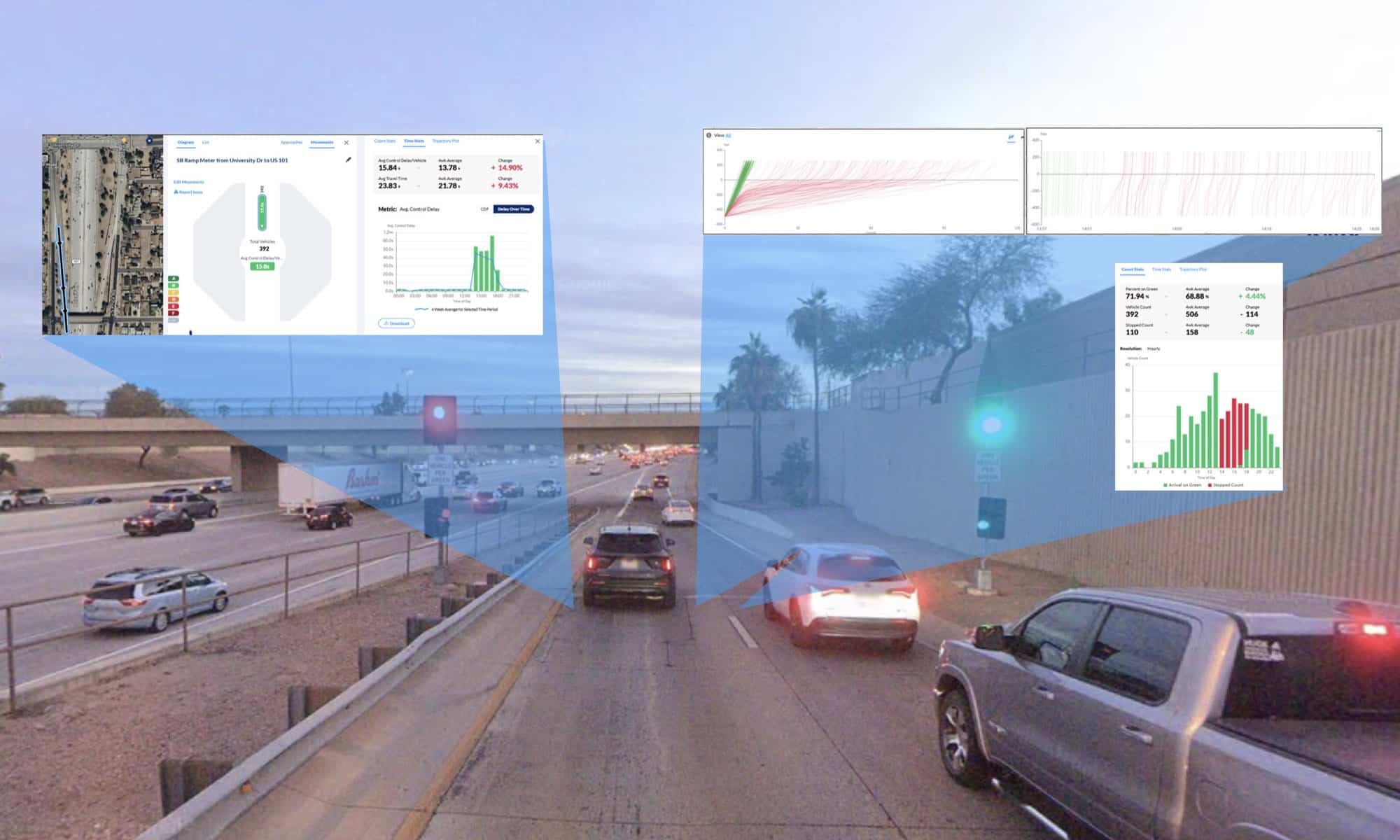
Managing the flow of vehicles from arterial roads to freeways has long been one of the most delicate balancing acts in transportation engineering. Ramp meters—those small but mighty signals at freeway on-ramps—exist for a reason: to control the rate at which vehicles enter high-speed traffic, easing freeway congestion, reducing collisions, and improving overall travel time. But are they working as effectively as they should?
The Ramp Meter Challenge
Ramp meters are vital for smoothing merging behavior and preventing freeway breakdowns. However, optimizing their signal timing—especially at complex diamond interchanges, where ramps interface directly with arterial signals—can be a significant challenge. Transportation professionals often rely on manual data collection, short-term field studies, or expensive roadside equipment to measure ramp meter performance. These traditional methods are:
- Costly and Time-Consuming
- Temporally Limited (providing only a snapshot in time)
- Often siloed from broader network performance data
This fragmented approach makes it hard to identify systemic issues, fine-tune signal timing, or make data-driven improvements.
A Smarter Way: INRIX Signal Analytics
What if you could assess ramp meter performance using continuous, real-world data from vehicles already on the road?
INRIX Signal Analytics leverages anonymized data from millions of connected vehicles to provide signal performance metrics—such as delay, arrival on green, and stops—without needing roadside sensors or field equipment. It offers a network-wide, always-on lens into how signals perform, including those at complex ramps and interchanges.
Key insights include:
- Trajectory plots showing vehicle speeds and stop behavior
- Split Failures: Identifies times when the queue doesn’t fully clear during the green phase, signaling over-saturation or poor metering calibration.
- Approach Delay: Measures how long vehicles are delayed before the ramp meter, helping quantify congestion and driver experience.
- Arrivals on Red/Green: Tracks when vehicles arrive relative to signal phases to assess alignment with metering and identify potential safety or efficiency issues.
- Turn Movement Counts: Captures left, through, and right movements to understand ramp demand at interchanges and optimize phase timing.
- Percent Arrivals on Green (PAG): Indicates how well signal timing aligns with actual arrivals, with low values suggesting potential inefficiencies.
- Travel Time: Measures downstream freeway performance to determine if ramp metering is improving mainline flow.
Why It Matters
For transportation professionals managing freeway interchanges, INRIX Signal Analytics offers:
- Current and Historical Performance Metrics for Ramp Meters
- Scalable Data Across the Entire Network
- Proactive Identification of Optimization Opportunities
Imagine being able to see not just how many vehicles were delayed at a ramp, but when, for how long, and how that delay trend is shifting over time. With this kind of insight, engineers can adjust ramp meter timing, coordinate with arterial signals, and improve throughput—all without sending a team to the field.
Driving the Future of Ramp Management
Ramp meters are only as effective as the intelligence behind them. With INRIX Signal Analytics, transportation agencies can go beyond guesswork and manual counts, unlocking data-driven strategies to improve flow, reduce delay, and make our roadways safer and more efficient.
Ready to see how your ramp meters are performing? Learn more about INRIX Signal Analytics and how it can elevate your traffic signal management.




